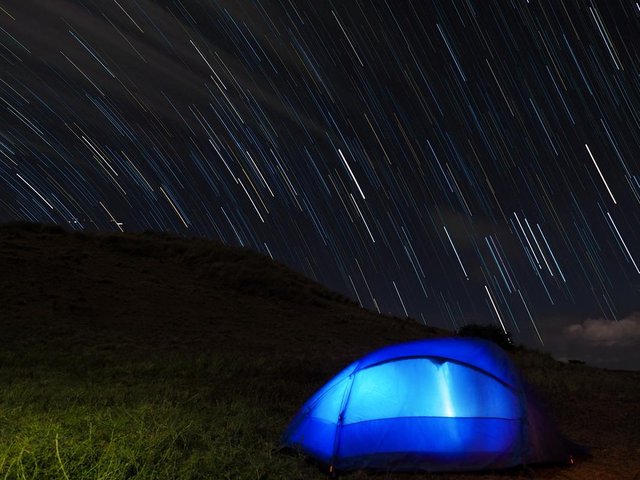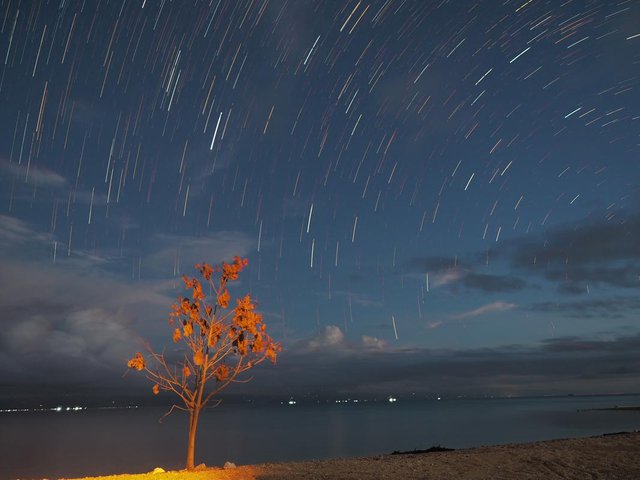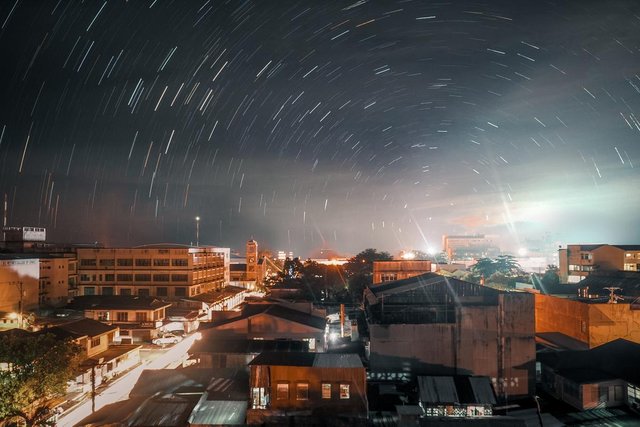Photographing Star Trails - A Definitive Guide
Continuing from our tutorial series, we'll now discuss about another aspect of capturing the night sky, star trail photography.

The earth revolves every second and photographing this results in the movement in the stars. These trails in the stars produce fascinating patterns and will give a landscape a different abstract. The process for capturing star trails isn't nearly as difficult as before with the advancement in technology.
Where and When to Shoot
Like any night sky photography, you may want to shoot far away from any city lights or point the camera away from light polluted area. Any ambient light will make stars less visible and we don't want that. It would probably take a bit of a long drive for people living near the city but it would be worth it. A detailed map containing light details can be found at Light Pollution Map.
Also, planning to do your star trail shooting on a moonless night will help produce better result. Similar to what happens with city lights, light coming from the moon will also make the stars less visible. You can check the moon phases from TimeAndDate.com.
As an additional tip, have your shooting on a clear and cloudless sky.

30-minute star trail at 20secs shutter speed, f4, ISO 800 and a total of 90 photos.
Setting up your Equipment
The most important thing you will need is a tripod to stabilize your camera during the long exposures. A good and sturdy tripod will allow your camera to remain still throughout the full capturing process.
Cable release is very handy but not essential. One trick to do when you currently don't have one is to set a set a timer (at least 2 seconds) in your camera before it starts to take a shot and manually press the shutter after every shot for the whole exposure process.
Having an intervalometer will also make the process easier. You can program it to take specific number of shot and the interval through them. It is a bit expensive but will significantly make shooting easier.
You will also want to use the widest lens that you have to include as many star trails in your shot.
Quick Tip: Make sure to have extra batteries when shooting a night. Batteries tend to drain faster on cold temperature and the last thing you want after driving far away from the city is ending up with an empty battery without a decent shot.
Focusing
Set the lens’ focus to infinity. It also helps to focus on a brighter star in order to make sure that the focus is set to infinity. If you don't have that, another way is to turn on your flashlight and point it far enough away from you and try to focus on that.
Composition
Now that our gears are set up, it's now time to frame the shot.

20-minute star trail at 20secs shutter speed, f5.6, ISO 400 and a total of 60photos.
Long exposure star trails make amazing photos on their own. But to actually make the photo stand out or unique, you need to add foreground objects in your composition. Like what great photographers say:
"The image shouldn't only be focus about the night sky, rather how they interact with the landscape".
North Star
As the earth is spinning around the axis, the North Star will not move as much. This means that all star trails will form a circle and the north star will be centered around it. You may want to include this center point with regards to your composition.

Star trail in the city is not impossible but requires a lot of patience and post-processing. This is a 20-minute star trail at 20secs shutter speed, f8, ISO 100
Method
Shooting star trails could be can be perform using two method. The first one is doing a single long exposure. The second and my preferred way of doing it is through Stacking.
Stacking simply means shooting multiple shots of the night sky then ""stack" them all into one photo in post. I usually take around around 40-100 shots with 20 secs shutter speed. Then stack them all into a final shot in post.
Post-Processing
Okay so now you've taken a hundred of photos, you are ready to combine them into a single output photo. I use StarStax for this process. It is free, easy to use and does the job very well. It also has an advance feature of filling the gaps of star trails for you final image. I usually use the "Blending" mode and just point the location of the folder that contains all the star trail exposure photos that you've captured.
This is the most exciting part of the process because you will be able to finally see the output of your shoot.
9.53% @pushup from @ajcordenete
Excelente, descripción del proceso. Te felicito. Los resultados muy buenos en el procesamiento de las fotografías. Voy a usar el sotar y te digo como fue.
Thank you! Gracias!
You got a 7.27% upvote from @buildawhale courtesy of @ajcordenete!
If you believe this post is spam or abuse, please report it to our Discord #abuse channel.
If you want to support our Curation Digest or our Spam & Abuse prevention efforts, please vote @themarkymark as witness.
great shot and very detailed on how you were able to achieve it.
I love it how pros make it look so easy to do but it takes skills and timing.
Somehow yes, but those pros are really amateurs at some point. Practice and perserverance is key.
This post has received a 3.38% upvote from @lovejuice thanks to @ajcordenete. They love you, so does Aggroed. Please be sure to vote for Witnesses at https://steemit.com/~witnesses.
You got a 2.14% upvote from @adriatik courtesy of @ajcordenete!
This post has received a 24.08% upvote from @msp-bidbot thanks to: @ajcordenete. Delegate SP to this public bot and get paid daily: 50SP, 100SP, 250SP, 500SP, 1000SP, 5000SP Don't delegate so much that you have less than 50SP left on your account.
Thanks so much for this tutorial! I never photographed stars, but I'd like to (and I am familiar with long exposure). Your explanations make it sound doable! I've bookmarked this page to reference when I have the opportunity.
I'm glad it helped you! Looking forward to seeing your star trail shot! Please send me a copy if you happen to shoot one.
Wow! Incredible photos. It's amazing what
effects you can achieve with one camera. I need to invest in a good tripod. Again, amazing pictures :)
Yes we should invest in some really good tripod especially when you're doing a lot of long exposure shots. Thank you! I see you got some cool photos too.
Thanks! Your post inspired me to try a new kind of photography, the long exposure I mean. The stars' pics are awesome :)
Can't wait to see your version of it! Best of luck!